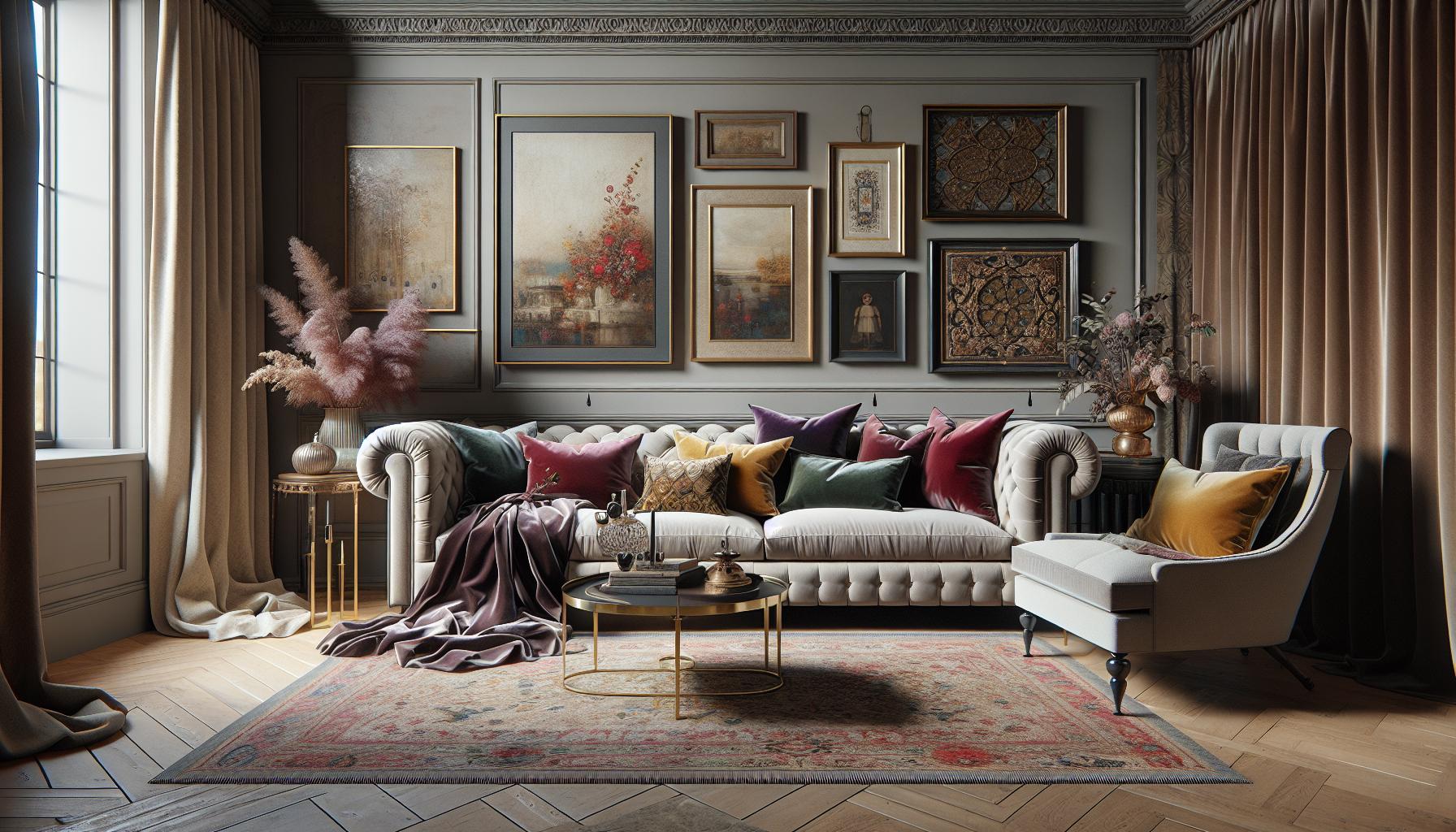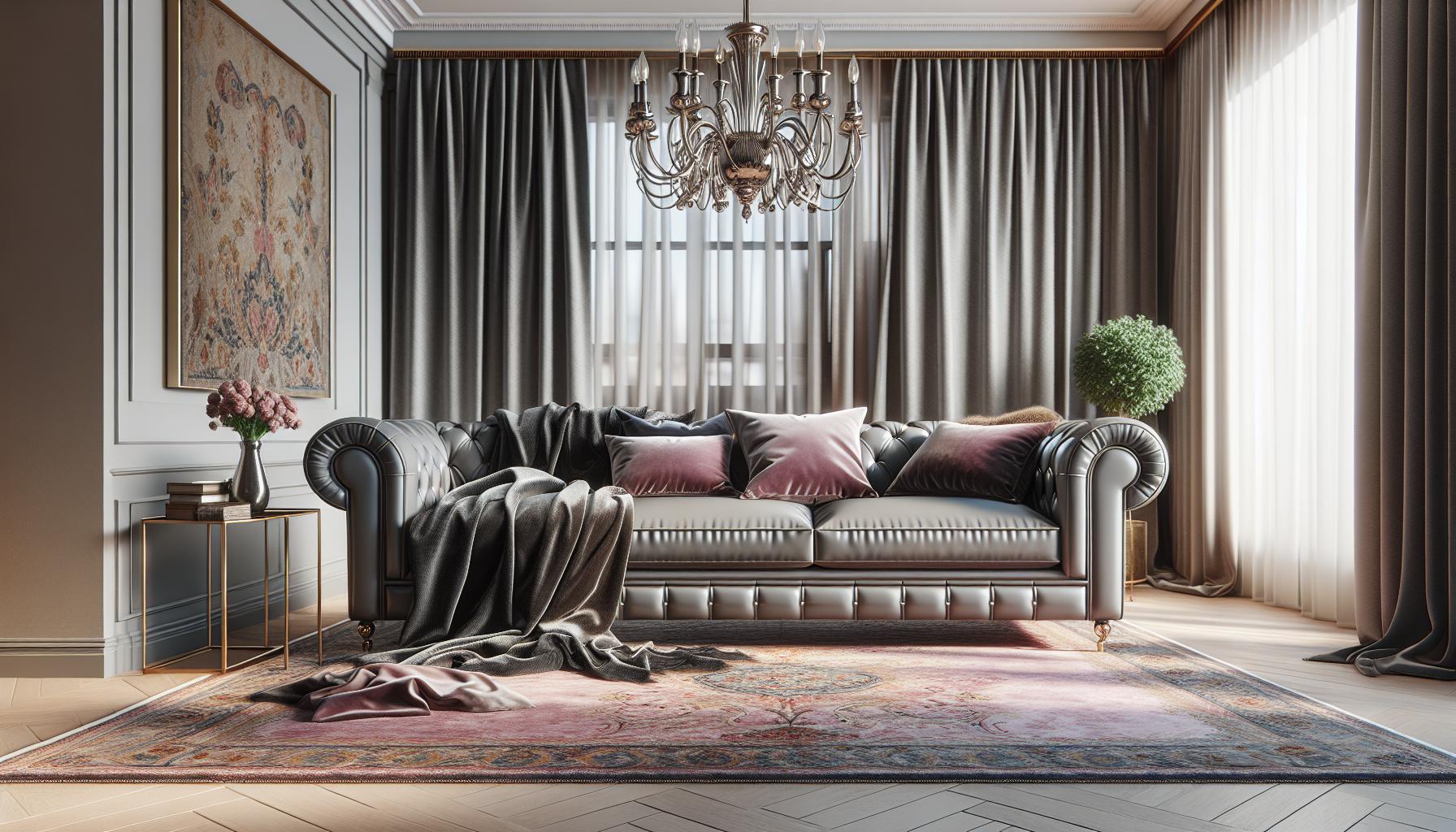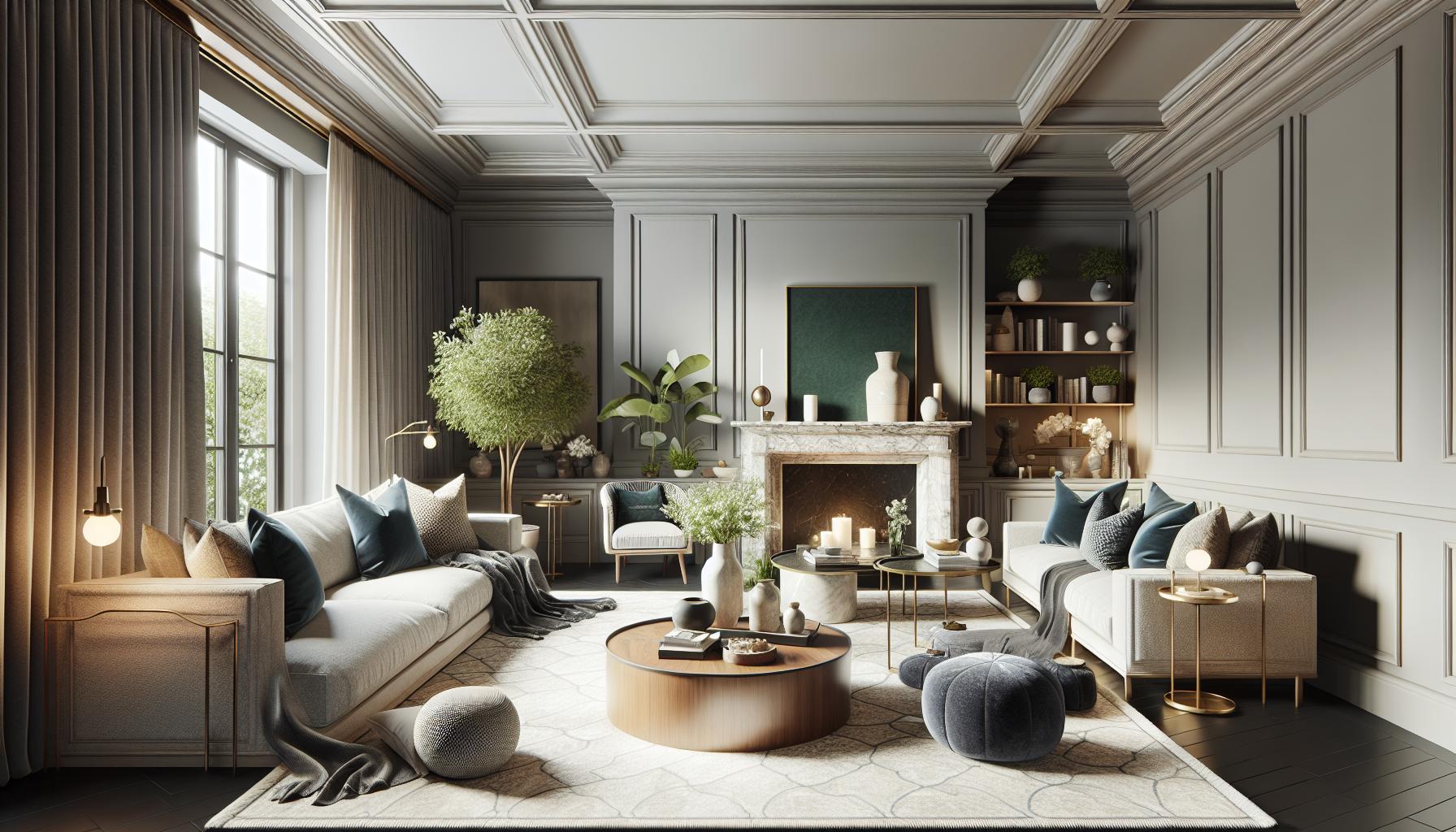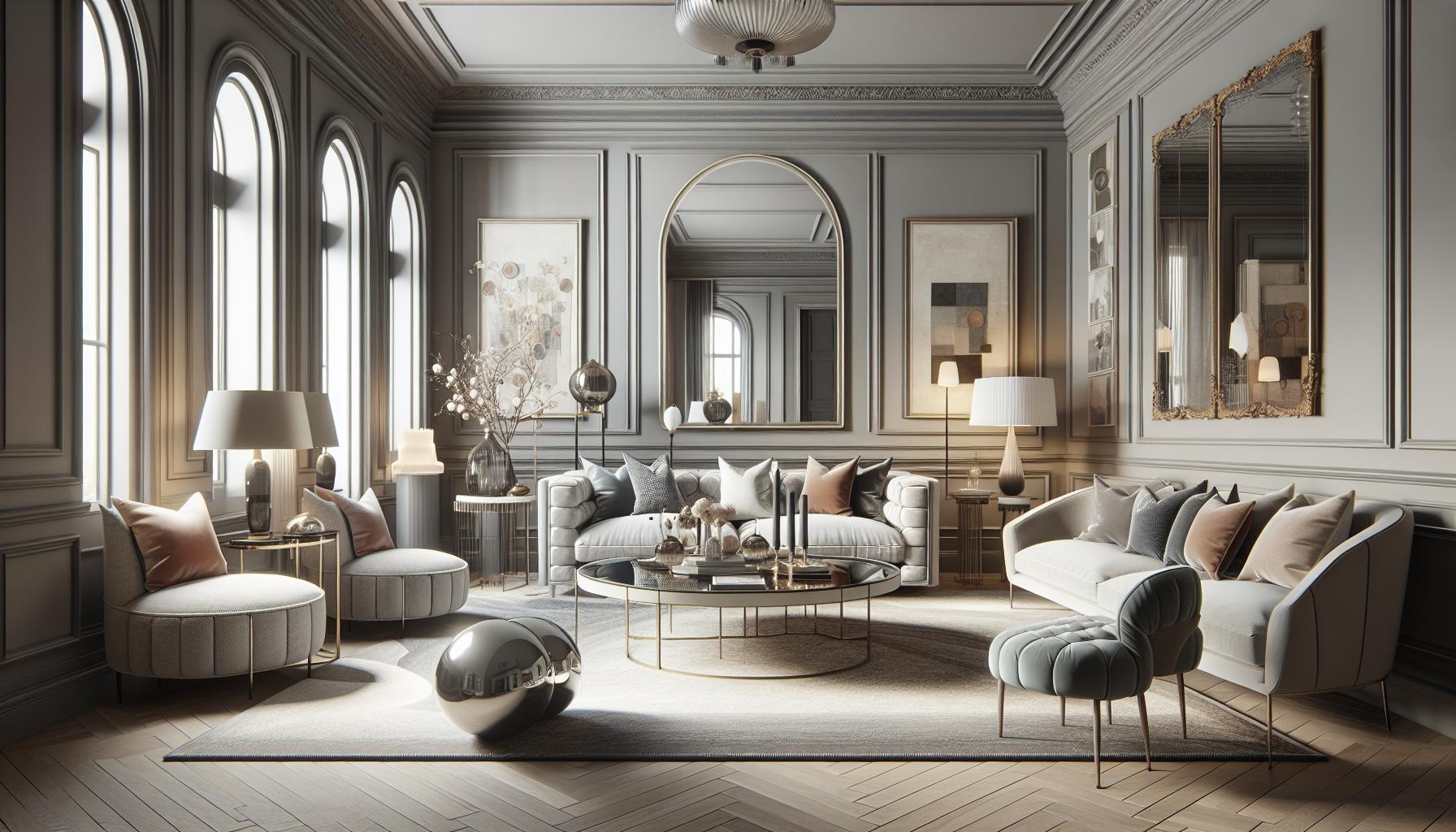
When I first stumbled upon new traditional interior design, I was captivated by its perfect blend of classic elegance and modern flair. This style embraces the charm of timeless aesthetics while infusing contemporary elements that speak to today’s sensibilities. It’s like stepping into a space where history meets innovation, creating a harmonious balance that feels both nostalgic and fresh.
As I explored this trend further, I realized how it allows for creativity and personalization, making each space uniquely inviting. New traditional design respects the past but isn’t afraid to break the rules, incorporating bold colors, eclectic patterns, and unexpected textures. It’s about creating a space that’s sophisticated yet approachable, where every detail tells a story.
In my journey to understand this style, I’ve discovered that new traditional design is all about layering—mixing heirloom pieces with modern furnishings, blending old-world craftsmanship with cutting-edge technology. It’s a celebration of the best of both worlds, offering endless possibilities for transforming any home.
Key Takeaways
- New traditional interior design blends classic elegance with modern flair, creating a harmonious space that balances timeless aesthetics with contemporary elements.
- The style is characterized by the use of classic furnishings updated with modern twists, layered textures and patterns, and the incorporation of antiques and vintage pieces.
- A key element is its balanced color palette and materials, combining neutral tones with bold accents and utilizing natural materials for an inviting atmosphere.
- Successful new traditional design involves blending modern and traditional decor while achieving symmetry and balance to foster a cohesive and inviting space.
- Implementing this style requires intentional choices, from selecting the right furniture with updated features to thoughtfully accessorizing with art and decor for a curated look.
New Traditional Interior Design
New traditional interior design merges classic refinement with a modern twist. I see it as a blend of timeless elements with up-to-date conveniences. Rich textures and muted color palettes dominate the scheme. Imagine a grand antique table paired with sleek contemporary chairs. This creates a cohesive look that’s both elegant and approachable.
Layering forms a vital aspect of this style. I often recommend mixing diverse materials and finishes to add depth. Consider incorporating velvet alongside brushed metals or marble with rustic woods. Such combinations offer both visual interest and tactile appeal.
Balance serves as the backbone of new traditional design. Symmetrical arrangements and proportionate scales ensure harmony. For instance, pairing sizeable framed artworks with a substantial farmhouse sideboard maintains equilibrium. No single element overshadows another.
To complete a new traditional space, I suggest integrating technology subtly. Concealing gadgets within custom cabinetry or opting for smart fixtures with classic designs aligns innovation with tradition. This approach fosters a seamless blend of functionality and aesthetics, enriching the overall ambiance.
Key Elements of New Traditional Interior Design

New traditional interior design thrives on combining timeless elements with contemporary flair. This style creates spaces that are both familiar and refreshing.
Classic Furnishings with a Modern Twist
Classic furnishings in new traditional design often feature modern updates. Think of a Chesterfield sofa reimagined with streamlined arms or a wingback chair in a bold, contemporary fabric. These updates maintain the integrity of traditional forms while offering modern comfort and style. By incorporating such pieces, the design preserves classic sophistication with unexpected touches.
Layered Textures and Patterns
Layering textures and patterns is vital in new traditional interiors. A room may boast a silk rug, linen drapery, and a velvet throw. These layers add depth and interest to the space. Patterns like damask, stripes, or floral prints mix to create a dynamic yet cohesive look. This approach enlivens the room while maintaining a sense of unity and elegance.
Incorporating Antiques and Vintage Pieces
Antiques and vintage pieces aren’t just decorative; they add character and history. A vintage chandelier might hang over a contemporary dining table, creating a stunning contrast. Integrating such pieces enriches the narrative of the home, allowing personal stories and memories to shine through. These elements anchor the design in tradition while accommodating modern functionalities.
Color Palette and Materials

New traditional interior design thrives on a balanced color palette and the thoughtful selection of materials. Combining neutral tones with vibrant accents and utilizing natural materials enhances the timeless yet innovative essence of this style.
Neutral Colors with Pops of Bold Accents
Neutral colors like beige, taupe, and soft grays form the foundation, providing a serene backdrop. I find that introducing bold accents, such as deep navy, emerald green, or rich burgundy, adds visual interest and depth. These bold hues can appear in elements like throw pillows, artwork, or a statement piece of furniture, balancing traditional roots with modern flair.
Use of Natural Materials
Natural materials bring warmth and authenticity to new traditional interiors. I often incorporate woods like walnut and oak, which lend a classic touch. Stone surfaces such as marble or granite add durability and luxury. Textiles like cotton, linen, and wool create inviting textures, while metals like brass or iron introduce a contemporary edge. These materials work together to ground the design, offering a cohesive and inviting atmosphere.
Balancing Old and New Design Elements

New traditional interior design embodies the harmony between vintage charm and contemporary flair, fostering spaces that feel both timeless and fresh.
Mixing Modern and Traditional Decor
Incorporating both modern and traditional decor creates a visually engaging space. I often pair classic antiques like ornate mirrors or vintage armchairs with sleek modern pieces to bring contrast. This juxtaposition highlights the uniqueness of each element. Additionally, I like to use neutral backdrops—such as soft grays or creams—to ensure neither style overwhelms the other. Adding contemporary artwork to a traditionally styled room can also update and refine the overall look. Blending different styles in this manner reinforces the dynamic narrative of new traditional design.
Achieving Symmetry and Balance
Achieving symmetry and balance is crucial in new traditional spaces. I aim for arrangements that promote harmony, such as placing matching lamps on either side of a sofa or using pairs of chairs to frame a fireplace. This approach stabilizes the room’s aesthetic while retaining interest. Proportionate scale is important too; for example, an oversized coffee table might work well with a large sectional, creating visual equilibrium. I conscientiously incorporate elements of varying heights and weights to avoid monotony. This technique demonstrates how carefully considering symmetry and proportion enhances the serenity and appeal of a new traditional design.
Tips for Implementing New Traditional Style
Achieving a new traditional style requires a strategic blend of classic and contemporary elements. Focus on intentional choices to cultivate a cohesive and inviting space.
Selecting the Right Furniture
Choosing the right furniture is pivotal for new traditional spaces. I look for pieces that embody classic designs with updated features. Furniture such as a wingback chair with a modern fabric pattern or a pedestal table with sleek lines effectively merges styles. Prioritize quality craftsmanship by opting for solid wood pieces with intricate detailing. Upholstered items like sofas and armchairs benefit from textures such as velvet or linen, enhancing the room’s depth. To maintain a seamless look, balance is essential—pair hefty furniture with more streamlined, contemporary items to avoid feeling overly traditional or modern.
Accessorizing with Art and Decor
Art and decor selections significantly impact the ambiance of a new traditional room. I incorporate art that combines contemporary styles with a nod to the past, like a modern painting in a vintage frame. Mixed media art installations can bridge classic and modern sensibilities. Additionally, decorative objects such as ceramic vases, bronze sculptures, and glassware offer a tactile quality that enriches the space. When arranging, aim for symmetry to uphold a sense of order and harmony. Suppose your decor includes a collection of antique books; group them with a sleek, modern lamp to achieve a curated yet balanced look.
Modern Innovation in Design
Exploring new traditional interior design reveals a world where timeless elegance meets modern innovation. By blending classic and contemporary elements, this style creates spaces that are both inviting and visually captivating. It’s all about achieving the right balance and selecting pieces that resonate with personal style while honoring tradition. Whether it’s through the use of rich textures, strategic color palettes, or thoughtful furniture choices, new traditional design offers a unique opportunity to transform any home into a sanctuary of warmth and sophistication. Embracing this style means celebrating the past while looking towards the future, crafting a home that’s truly reflective of one’s individuality.
